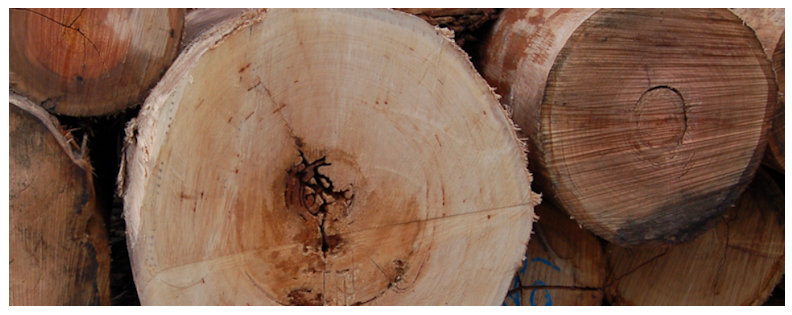Growth rings
In spring and early summer, when there’s lots of water and sunlight and the temperature is increasing, trees grow fastest. The cells formed during this rapid growth phase tend to have thinner cell walls, with larger cavities to transport water.
This area of fast-growing wood tissue is known as earlywood (or springwood) and often appears as a wide light-coloured growth ring.
As summer progresses into autumn, the water supply becomes less available, days become shorter, and temperatures get cooler. The tree’s growth slows down and the cells develop thicker walls and thinner cavities. This shows up as much denser and narrower growth rings, called latewood (or summerwood).

The image above shows a magnified view of the growth rings in a pine tree, taken through a microscope by the CSIRO (photo used with permission).
In species where separate growth rings are formed reliably every year, they are also called annual rings. Although annual rings are common in the softwoods, and in some hardwoods that grow in colder regions, many hardwoods don’t have obvious growth rings, because the outer boundaries tend to merge with neighbouring rings.

